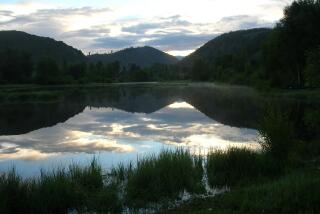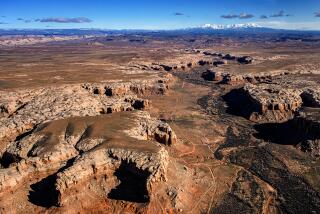Behind Wilderness Therapy
- Share via
Inspired by earlier programs such as Outward Bound, the wilderness therapy industry in the western United States grew largely out of academic experiments at Brigham Young University, in Provo, Utah, in the late 1960s. A young Idahoan, Larry Dean Olsen, was giving a course in wilderness living. When he took groups of troubled students into the desert to teach them survival skills, he noticed sharp improvements in their behavior and academic performance. Soon BYU was awash in survival courses, even one designed, without irony, for Native Americans.
In the mid-1970s Olsen left BYU to establish what is now the Anasazi Foundation, a nonprofit wilderness-therapy program currently based in Mesa, Ariz. Anasazi’s approach was, and is, a gentle one based on trust. “The feeling has always been that the desert is not a harsh place,” says Olsen. “Once kids get in harmony with it, their lives will improve, and they’ll learn how to make better decisions.” As for recent programs that have perverted his original work with a paramilitary mind set, he notes: “They’ve studied my technique and put on the skin but have failed to get the heart of what we’re doing. Instead, they’ve gone to the boot camp idea and yelling in the face. For most kids, that doesn’t work.”
If wilderness therapy has had its scandals, it also has its standouts. Anasazi has put more than 10,000 young people through their paces safely and claims a high success rate for its family-oriented approach to youngsters’ behavioral problems. (Parents maintain weekly telephone contact with counselors and are also invited out on the trail.) Another group with an enlightened approach and an exemplary reputation is Aspen Achievement Academy, which operates out of Loa, Utah, and runs many of its groups in the lunar grandeur of Capitol Reef National Park.
But do such programs really work? “We’ve found some very positive results and statistically significant gains,” says Doug Nelson, an assistant professor at Brigham Young University. “In the right hands these courses can be powerful tools. In the wrong hands, though, they can be equally damaging.” But long-term studies have just begun at BYU, and minimum standards for wilderness camps are only now being discussed nationally.
How can parents shopping for such programs make an informed choice? “The first thing any parent should ask,” says Olsen, “is what type of therapeutic program do you have? What philosophy do you adhere to? How do you see your kids? What do you expect to accomplish? Have them explain all of this in detail. I would also be so brave as to say: ‘When my child acts up out there what are you going to do to him?’ If they say they’ll do something to him, avoid the program. If they say they’ll work with him, you’ve got hope.”


